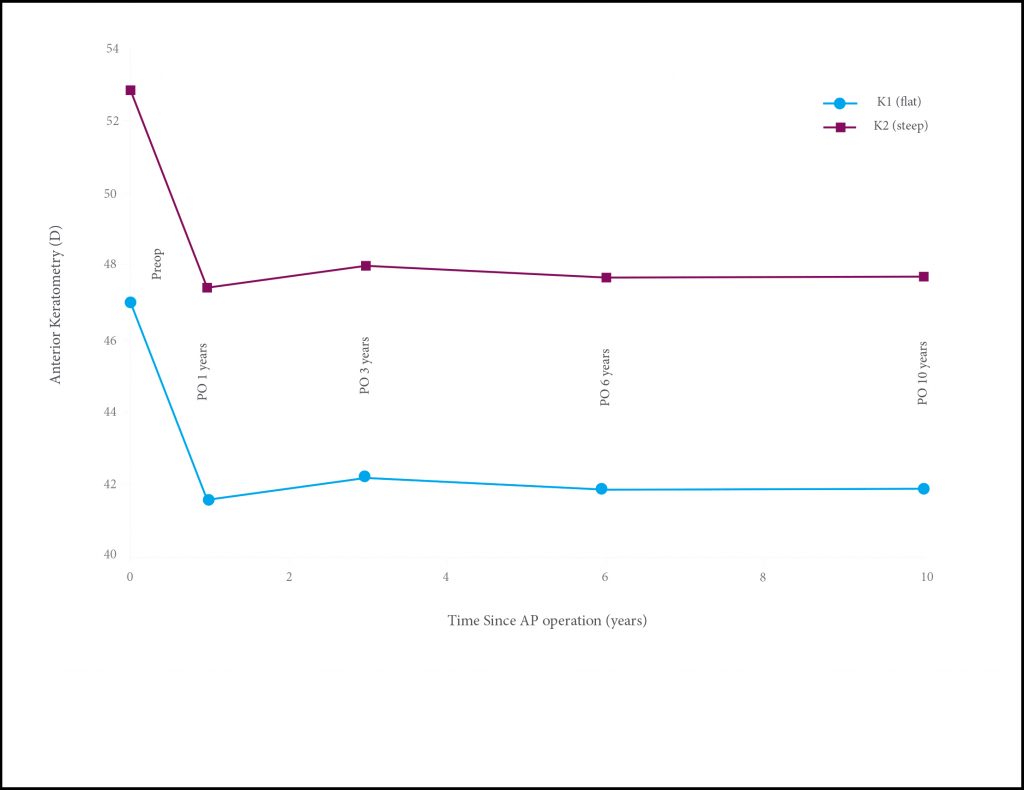CXL plus PRK for keratoconus
Athens Protocol for keratoconus shows good long-term results with no keratoconus progression and additionally marked improved visual outcomes

Roibeard O’hEineachain
Published: Monday, April 1, 2019
 Mean anterior K1 flat (blue line) and K2 steep (purple line) and maximum keratometry (black line) as measured by the Scheimpflug device (Oculyzer II, WavLight AG, Erlangen, Germany) preoperatively up to 10 years postoperatively.
Mean anterior K1 flat (blue line) and K2 steep (purple line) and maximum keratometry (black line) as measured by the Scheimpflug device (Oculyzer II, WavLight AG, Erlangen, Germany) preoperatively up to 10 years postoperatively.All units in keratometric dioptres (D)[/caption] The Athens Protocol for treating progressive keratoconus with partial topography-guided photorefractive keratectomy (PRK) and corneal cross-linking (CXL) appears to provide a safe and stable regularisation of corneal topography, said Anastasios John Kanellopoulos MD, New York University School of Medicine, New York, USA. At the 23rd ESCRS Winter Meeting in Athens Greece, Dr Kanellopoulos presented an observational case series of 144 eyes treated for progressive keratoconus with the Athens Protocol procedure. The study showed that mean uncorrected distance visual acuity, (UDVA) improved from 0.19 preoperatively to 0.53 at one-year postoperative follow-up, remaining stable at 10 years at 0.55. In addition, corrected distance visual acuity (CDVA) increased from 0.59 preoperatively to 0.8 at one year, remaining stable at 10 years at 0.81. Dr Kanellopoulos noted that 144 eyes showed no further keratoconic progression, although corneal topography showed progression in three eyes and was associated with persistent eye rubbing against medical advice and five eyes had a hyperopic shift during the 10-year follow-up. In terms of keratometry, mean K2 decreased from 50.57D preoperatively to 45.87D at one year postoperative (p<0.01), further flattening slightly but significantly more to 44.0D at 10 years (p<0.01). In addition, mean Kmax decreased from 53.43D to 46.17D (p<0.01), and also further decreased slightly but statistically significantly to 44.75D at 10 years (p<0.01). In addition, mean minimal corneal thickness decreased from 468.74 microns preoperatively to 391 microns at one year. However, by 10 years this had increased to 395.42 microns, most likely as a result of epithelial remodeling.
 Anastasios John Kanellopoulos
Anastasios John Kanellopoulos